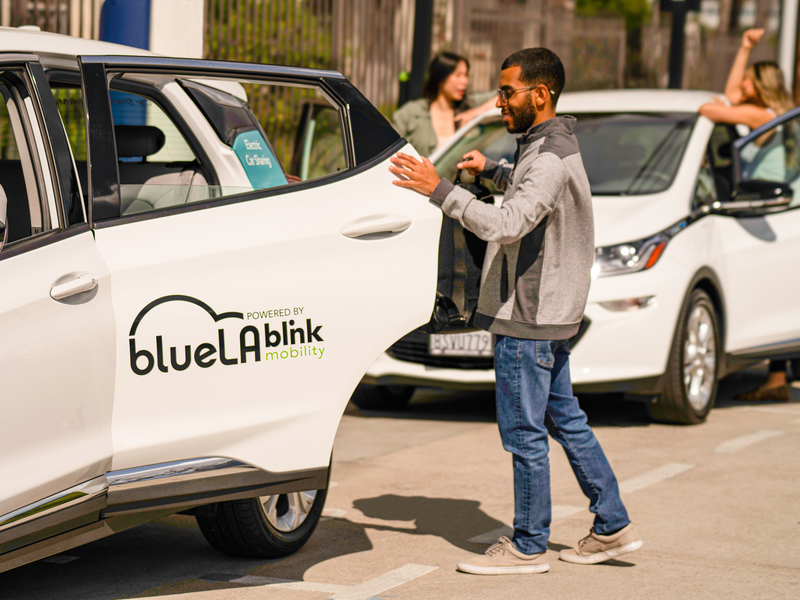Many people who drive EVs do so for environmental reasons, such as reducing greenhouse gases and to help prevent climate change, but what does that really mean? What is climate change? According to the United Nations, climate change refers to long-term shifts in global temperatures and weather patterns.
The main cause of climate change has always been the Earth itself. For example, at the time dinosaurs lived on earth, weather was hot and cloudy like a greenhouse, too overcast to see the sun. Millions of years later, during the Ice Age, the weather was crisp, clear, and sunny, but cold. These natural changes, created by the Earth itself, take place over thousands and even millions of years. Since the Industrial Revolution, this change in climate has picked up at an exponential rate inconsistent with the changes produced by the Earth itself. More extreme changes are happening faster than ever before. These changes include consistent increases in temperature and an unnatural increase in large, damaging storms.
Human beings have been the driver of climate change since the late 1700’s. Why? In the process of making things, industry, manufacturing, utilities, and travel also create by-products that are hazardous to life on Earth, such as gases that cover the Earth like a blanket, increasing temperatures. These gases are called greenhouse gases because of the heating and suffocating effect they have.
Are we really increasing the global temperature? 2021’s Climate Change Report showed that emissions of greenhouse gases from human activities are responsible for “approximately 1.1 degree C of warming since 1850-1900, and finds that, averaged over the next twenty years, global temperature is expected to reach or exceed 1.5 degree C of warming.” That figure, once unthinkable, is about to be bypassed and scientists fear the increase will be closer to 2 degrees C. To many people, this may sound minor. What difference does a degree or two make?
Here’s a few of things that could happen if the global temperature rose 2 degrees:
- A sea level rise of 1.18 to 2.25 feet, making low lying coastal areas in some parts of the world uninhabitable
- 18% of insects, 16% of plants, and 8% of vertebrates are projected by 2100 to lose more than half of their climatically determined geographic range
- Cold water introduced into the Atlantic from melting ice caps will affect the gulf stream, which brings warmer weather to the eastern seaboard of the U.S. Right now, the gulf stream is at its weakest in over 1,000 years.
- Fishermen’s catch reduced by 3 million tons
- Coral reefs 99% destroyed
- No ice in the Arctic Sea for the summer once every 10 years, destruction of Arctic life
- Decline in rice, maize, corn, crops, and the resulting decline in domestic animals which eat grains
- Potential hurricane conditions on the eastern seaboard, such as off the coasts of D.C. and New York
- Vast swaths of trees destroyed in increased wildfires on the western coast, smoke from wildfires across the country, increasing respiratory illness
- An increase in new diseases and tropical diseases, such as malaria
Greenhouse gases, which warm up the planet, cause this increase in temperature. Where do greenhouse gases come from? According to the EPA, the sources of greenhouse gases are as follows: transportation (27%), electricity (25%), industry (24%), residential and commercial (13%), and agriculture (11%).
An increase in worldwide temperature and in abnormal storm conditions aren’t the only issues. Particulate matter, dangerous to breathe in, is present in gases and exhaust fumes. According to the World Health Organization, around 8 million deaths each year are the result air pollution, 4.2 million from outdoor air pollution, and 3.8 million from indoor air pollution.
While the problems surrounding air pollution and climate change sound daunting, small changes really can result in big gains. We still have the opportunity to limit the twenty year increase in temperature to 1.5 degrees C rather than 2 degrees C, which would keep hundreds of millions of people from becoming victims of climate change and the poverty that follows.
Blink Mobility doesn’t pretend to know everything, to be able to change the world single-handedly, or to stop global warning, but we do know that electric vehicles produce no tailpipe emissions. No particulate matter. No greenhouse gases. Because of that, the biggest source of these gases, transportation, is within our ability to control. If you want to make a difference for the planet and humans worldwide, why not do your part to reduce greenhouse gas emissions by driving an electric vehicle?
We know times are tough and an EV may not be within everyone’s budget right now, but renting one is. Blink Mobility features a fleet of all-electric rental cars with over 40 locations across Los Angeles. Becoming a member is as easy as downloading our app, and registering. Our monthly fees are a sliding scale that go as low as a $1/mo. for low-income qualified members. If you need a car for work, travel, or play, rent an EV from Blink Mobility, and don’t just drive. Move forward.
Recommend for You
Stay Informed
Join our mailing list for hot news and company updates.







